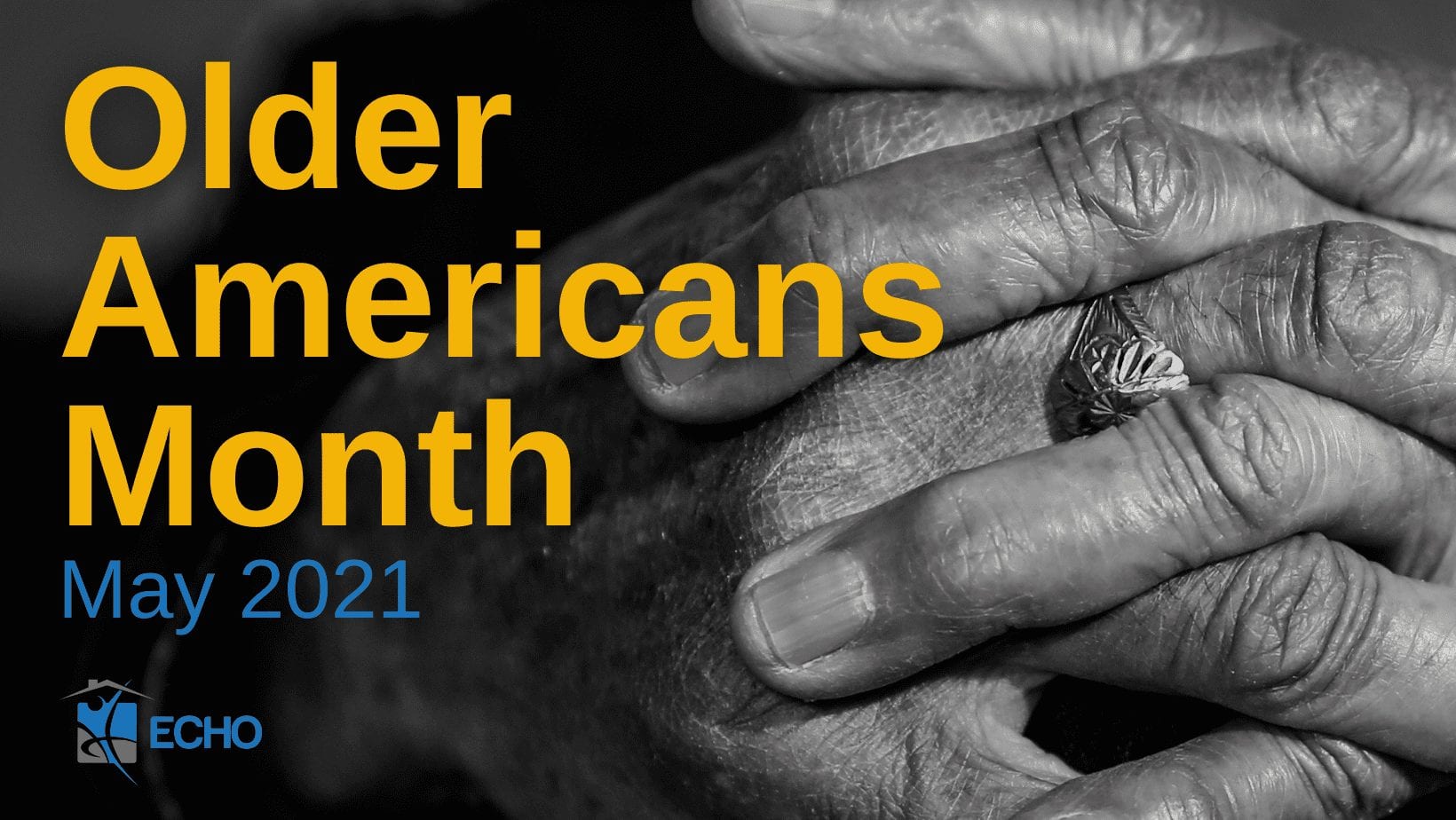Our unhoused population is aging
AUSTIN, Texas (May 14, 2021) – May is Older Americans Month, and right now the research is as clear as ever: The median age of America’s unhoused population is rising.
In Austin and across the country, older adults are finding themselves priced out of their longtime homes and unable to regain stability quickly enough to avoid becoming unhoused. At the same time, communities are unprepared to meet the housing, healthcare, and hospice needs of this aging population.
A new coalition of partners in both the aging and homelessness services sectors is working to address these growing challenges as part of the Aging and Homelessness Task Force, formed last year under the Aging Services Council of Central Texas. ECHO’s Healthcare System Liaison, Christa Signor, represents the organization on the task force created to respond to specific needs of an aging unhoused population.
“I don’t think people have an accurate idea of what homelessness is,” Signor says. Job loss, illness, domestic violence, marital challenges, and deaths of family members can push anyone toward housing instability, and those triggers become more common as a person ages. Many older adults are also on fixed incomes, meaning in Austin’s booming rental market, where renters already compete for units, affording a place to live is becoming increasingly difficult.
“If you’re not able to bid on housing, or if you’re not able to maintain that affordability, you start having these problems,” Signor says. “People are being pushed out of Austin/Travis County and other cities nationally, and then, where do they go? This is their home; this is where they’ve been.”
A growing need
The Aging and Homelessness Task Force is working to hire a consultant to determine the scope of the need in Austin and identify specific prevention and housing interventions for this population, says Amy Temperley, coordinator of the Aging Services Council.
Temperley, who’s also owner and CEO of Aging is Cool, has worked in aging services for 30 years and also served as interim executive director of Front Steps, the group that operates the ARCH, for several months in 2020. This intersection of experiences led her to start the task force to address what she sees as a growing need.
“Austin is one of the fastest growing populations for older adults in the country,” Temperley says. Homeless services providers are “going to see an influx of people in this age range, and we are totally missing the mark” on building out enough resources to meet their needs.
Of people experiencing homelessness who entered programs through the Homeless Management Information System (HMIS) in Austin/Travis County in the 12 months ending October 1, 2020, more than a quarter (26%) were over the age of 50. More than three-quarters (78%) of this group reported having a disability; 52% reported a physical disability, 51% reported a chronic health condition, and 49% reported a mental health problem.
Temperley and Signor agree the numbers show a scope of need within our community that providers don’t have the resources to meet now, let alone as the population continues to age. That’s why the task force exists.
“We’re working to identify what our community members’ needs are, identify what’s missing, and strategically plan to meet those needs,” Signor says.
Looking for evidence across the country
Signor recently presented data to the group from a study in San Francisco (PDF) that shows a growing number of people are experiencing homelessness for the first time as older adults. The study shows 44% of people in the survey group first experienced homelessness when they were 50 or older. More than half (56%) reported their health as fair or poor, and the prevalence of geriatric conditions (including mobility impairment, visual and hearing impairment, one or more falls, and urinary incontinence) were higher among the study group with a median age of 57 than they are among the general population in their 70s and 80s. The researchers concluded that 50 is the new 75 for this population.
The study also showed a marked increase in the proportion of people experiencing homelessness who were 50 or older, jumping from 11% in 1990 to about 50% now. With Austin facing similar affordability challenges, Signor and Temperley say, our community is poised to experience similar dramatic shifts in our unhoused population and the resources these neighbors need to regain stability.
The evidence is clear: Housing is healthcare, especially as people age.
“We have to start aggressively investing in housing solutions, not just for the aging population, but across the board,” Signor says.
Supporting our aging unhoused neighbors
Partners like Family Eldercare work incredibly hard to keep older adults housed and to provide rehousing and case management resources to people who’ve become unhoused.
“Affordable housing and homeless prevention services are crucial for the health and stability of an aging population on a fixed income,” says Shontell Gauthier, Family Eldercare’s Director of Financial and Housing Stability. “We’re grateful to have partners who see the intersection of housing, health and aging and want to close the gaps that exist in our community.”
Austin needs to scale up these types of support and focus more resources on the specific needs of this population, including medical respite beds so injured or ill people are not released from a healthcare facility into unsheltered homelessness to recover. More hospice beds are also critical.
“There are people in our community, who have less than six months to live, who are receiving hospice services and end of life care in greenbelts, in their car, and underneath bridges because there is not housing for them” Signor said. “As a community, we have to support and allow people to not only live with dignity, but to die with dignity.”
Temperley wants the provider and funder communities to focus on prevention resources to keep older adults in their homes and specialized housing, a kind of low-income assisted living that can provide help with cleaning, cooking, hygiene, medication, and other services – a middle ground between independent housing and round-the-clock care of a nursing facility.
She sees promise in places like Boston and Seattle, both of which have created agencies specifically to support people in this intersection of aging and homelessness. Austin does not necessarily need a standalone agency, Temperley says, but it certainly needs the focus such a program provides.
“This is a population we have to pay attention to,” Temperley says.

